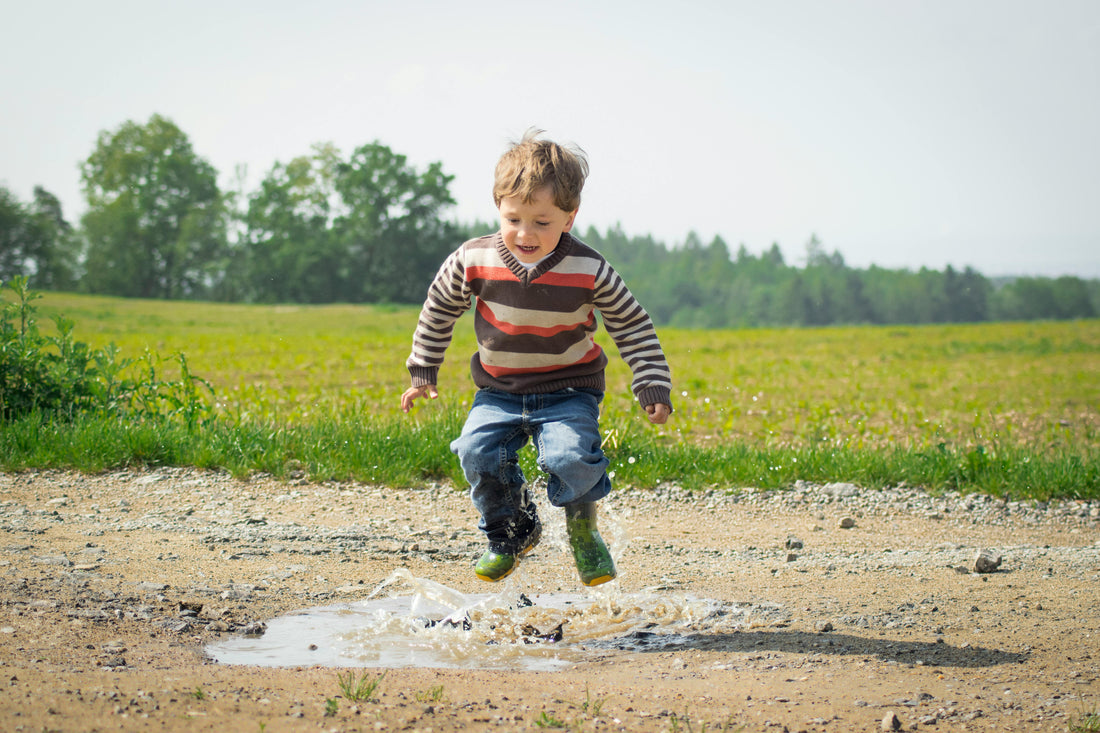
A Summer of Sensory Science: Five Nature Provocations To Try This Summer
Dr Claire WardenYesterday, I watched a three-year-old crouch beside a puddle, completely absorbed. She poked the surface with a stick, watched ripples spread, then called to her friend: "Look! The water has circles inside!"
That moment - pure sensory science unfolding through natural wonder - reminded me why summer offers such rich learning opportunities. Nature is both teacher and laboratory for experimenting, offering provocations that no indoor classroom could.
Inside-Outside-Beyond Framework in Practice
Before we dive into provocations, let's consider how sensory science naturally flows across the three learning spaces that shape meaningful inquiry:
Inside - Children's internal curiosity and emotional responses to sensory experiences
Outside - Hands-on exploration with natural materials and phenomena
Beyond - Connections to broader scientific concepts and community learning
When we honour this flow, simple observations like circles in a puddle expand into rich, sustained inquiries that touch multiple areas of learning.

Provocation #1: Puddle Chemistry
What you'll need: Puddles (or shallow water containers), various natural materials for testing, clipboards with paper
The invitation: "I wonder what would happen if we added different things to this puddle?"
Children naturally gravitate toward puddles, but turning this fascination into scientific inquiry requires gentle provocation. Offer leaves, twigs, stones, petals - anything nature provides - and invite experimentation.
Watch for the questions that emerge: "Why do some things float?" "What makes the water change colour?" "How deep is this puddle really?"
Document these thoughts in your Floorbook®. The beauty of puddles lies not in predetermined outcomes but in following children's genuine curiosity about cause and effect.

Provocation #2: Cloud Sketchbooks
What you'll need: Small notebooks, pencils, clipboards, comfortable outdoor seating
The invitation: "What do you notice about the sky today? How could we remember what we see?"
Cloud observation taps into children's natural tendency to find patterns and stories in the sky. Provide simple sketchbooks specifically for cloud watching - these become personal records of weather patterns and atmospheric changes.
Encourage predictions: "What do you think this cloud will do next?" "How might the sky look different after lunch?"
These sketches often evolve into discussions about weather, movement, and the invisible forces that shape our environment. Perfect material for later Floorbook® reflections about observation skills.

Provocation #3: Bark Rubbings
What you'll need: Paper, crayons with paper removed, various trees accessible to children
The invitation: "How many different tree textures can we discover and capture?"
This classic activity becomes genuine scientific inquiry when we focus on comparison and pattern recognition. Rather than making one rubbing, challenge children to create a collection that shows the diversity in their outdoor environment.
Questions that often arise: "Why are all these trees different?" "What made these patterns in the bark?" "Which texture feels the smoothest/roughest?"
Use these rubbings as starting points for deeper investigations into tree age, growth patterns, and the role of bark in protecting trees.
Provocation #4: Leaf Texture Talk
What you'll need: Collection bags, magnifying glasses, Floorbook® for group documentation
The invitation: "Let's become leaf detectives and discover all the different ways leaves can feel."
This provocation moves beyond simple collection to focused sensory analysis. Encourage children to sort leaves by texture, create descriptive language for what they feel, and share their discoveries with peers.
The scientific thinking emerges in their comparisons: "This one is fuzzy like my blanket" or "These bumpy dots remind me of our sandpaper blocks."
Document their language in your Floorbook® - their descriptive words often reveal sophisticated understanding of properties and materials.

Provocation #5: Shadow Investigations
What you'll need: Chalk, various objects for shadow-making, timers or clocks
The invitation: "What can we discover about shadows today?"
Shadows offer perfect opportunities to explore concepts of light, time, and spatial relationships. Start by tracing children's shadows with chalk, then invite them to predict how shadows might change.
Return to the same spot later in the day. The excitement when children see their shadows have "moved" sparks questions about the sun, time, and the Earth's rotation - complex concepts made accessible through direct experience.
These investigations often extend over several days, with children checking their shadow tracings and making new predictions.
Turning Observations into Ongoing Inquiry
Each of these provocations works best when we follow children's lead rather than rushing toward predetermined conclusions. The goal isn't to teach specific scientific facts but to nurture scientific thinking: observation, prediction, testing, and reflection.
Your Floorbook® becomes the place where these scattered moments of wonder connect into sustained lines of inquiry. Maybe the puddle chemistry leads to questions about rain collection. Perhaps cloud sketching evolves into weather tracking.
Summer sensory science isn't about cramming learning into nature experiences - it's about slowing down enough to notice the learning that's already happening and providing gentle provocations that deepen children's natural curiosity.
What sensory science moments have surprised you this summer? Sometimes the most profound learning emerges from the simplest provocations.
Want to dive deeper into outdoor learning that captivates children year-round? Our Planning and Curriculum Journals explore how to create dynamic outdoor spaces through high-level child consultation, offering practical frameworks, case studies, and inspiration for linking indoor and outdoor learning seamlessly.
These provocations work beautifully whether you have access to large outdoor spaces or just a small garden area. The key is following children's fascinations wherever they lead.

